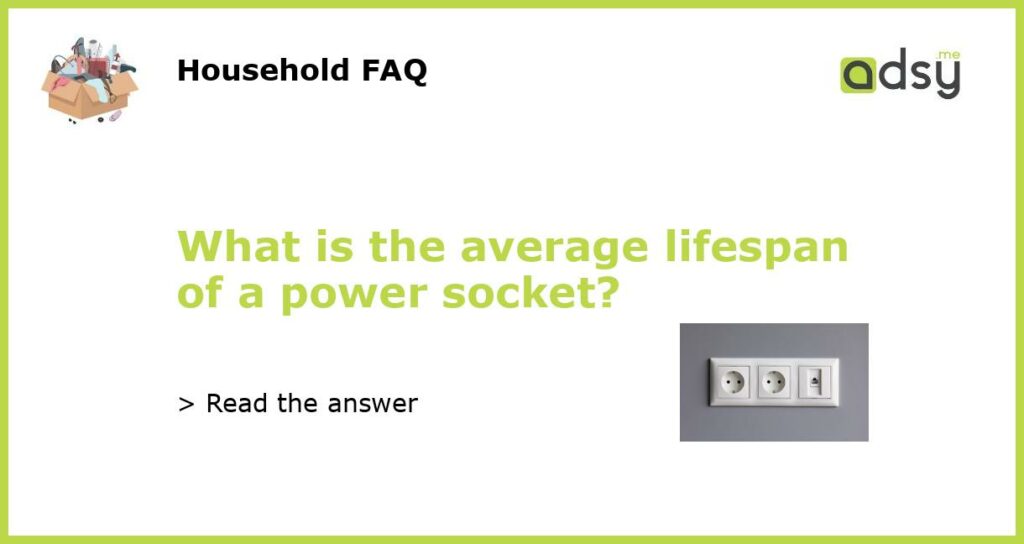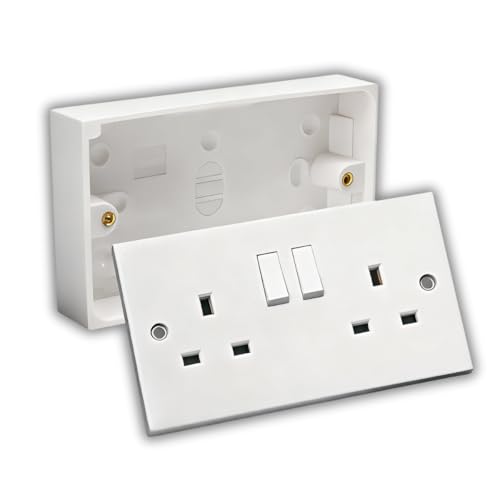What is the average lifespan of a power socket?
Power sockets are an integral part of our everyday lives. They provide the essential connection between our electronic devices and the electricity supply. But have you ever wondered how long these sockets can last? In this article, we will explore the average lifespan of a power socket and what factors contribute to its longevity.
Understanding power sockets
Before we delve into their lifespan, let’s first understand what power sockets are. Power sockets, also known as electrical outlets or receptacles, are devices that allow electrical equipment to be connected to the power supply. They typically have two or three holes where plugs can be inserted to establish a connection. Power sockets are an essential component in powering our homes, offices, and public spaces.
Factors affecting the lifespan
Several factors can influence the lifespan of a power socket:
- Material quality: The quality of the materials used to make the power socket can significantly impact its lifespan. Sockets made from high-quality materials, such as durable plastics and metals, tend to last longer than those made from low-quality materials.
- Usage intensity: The frequency and intensity of use can also affect how long a power socket will last. Sockets that are used more frequently or experience higher power loads may wear out faster than those with less usage.
- Environmental conditions: The environment in which the power socket is installed plays a role in its lifespan. Sockets exposed to extreme temperatures, moisture, dust, or other harsh conditions may deteriorate more quickly.
- Manufacturer quality: The quality and craftsmanship of the manufacturer also play a significant role in how long a power socket will last. Reputable manufacturers who prioritize quality control are more likely to produce sockets with longer lifespans.
Average lifespan of a power socket
The average lifespan of a power socket can vary depending on the factors mentioned above. Generally, a well-made and properly installed power socket can last anywhere between 10 to 20 years. However, it’s important to note that this is just an average estimation, and individual cases may vary.
Signs of a worn-out power socket
Over time, power sockets may show signs of wear and tear, indicating that they may need to be replaced. Some common signs of a worn-out power socket include:
- Loose connections: If the plugs do not fit snugly into the socket or feel wobbly, it may be a sign of wear.
- Flickering or intermittent power: If the power supply becomes inconsistent or flickers when using the socket, it could indicate a problem.
- Scorch marks or discoloration: If there are burn marks or discoloration around the socket, it may be a sign of overheating or electrical issues.
- Cracked or broken casing: Visible damage to the socket casing, such as cracks or breaks, can affect its functionality and safety.
If you notice any of these signs, it is recommended to have a qualified electrician inspect and replace the power socket if necessary.
Maintaining power sockets for longevity
While power sockets do have a lifespan, proper maintenance can help prolong their lifespan. Here are some tips to maintain power sockets:
- Regular cleaning: Dust and debris can accumulate in and around the socket, affecting its performance. Regularly clean the socket using a soft brush or cloth.
- Proper usage: Avoid excessive force when inserting or removing plugs from the socket. This can prevent damage to the socket and ensure a tight connection.
- Prevent moisture: Keep the socket area dry and avoid exposing it to moisture, as this can lead to corrosion and damage.
- Professional installation: It is recommended to have power sockets installed by a qualified electrician to ensure they are correctly wired and securely mounted.
Following these maintenance tips can help extend the lifespan of your power sockets and ensure their proper functioning for years to come.





![Tower Extension Lead, [13A 3250W] Surge Protector Extension Lead,8 AC Outlets & 4 USB Ports Multi Plug Socket Power Strip with 3M Extension Cable for Home, Office](https://m.media-amazon.com/images/I/41xEQjKqvJL.jpg)
